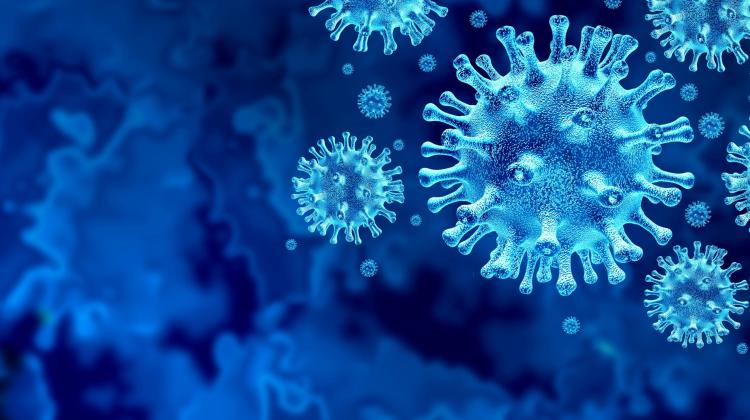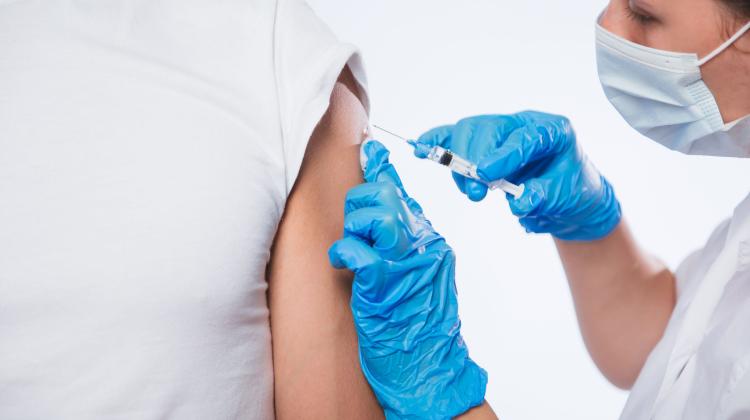Warsaw Uni scientists study substances that can inhibit coronavirus
 Credit: Adobe Stock
Credit: Adobe Stock
Researchers from the University of Warsaw have examined 15 million chemical compounds that could inhibit the activity of the protein responsible for lowering the body's resistance during COVID-19. Ultimately, the pool of compounds was narrowed to 400, and some of them are being tested in a lab.
The research results have been published in the International Journal of Molecular Sciences (https://www.mdpi.com/1422-0067/22/8/3957)
The protein responsible for reducing the body's resistance and promoting the coronavirus replication is PLpro, known to scientists since 2003 when the SARS epidemic broke out. By 'attacking' the PLpro protein with various chemical compounds, researchers look for drugs to treat COVID-19, caused by the SARS-COV-2 coronavirus.
“Various scientific groups have already looked for compounds that would work as SARS-COV-2 drugs. Until now, the results were not satisfactory, which is why we were looking for better solutions. We had partial knowledge based on the SARS-COV-1 virus, which is very similar. Our approach differed in the accuracy. We also checked whether selected compounds were not potentially toxic to the human body,” said Adam Stasiulewicz, a PhD student at the CeNT UW Interdisciplinary Laboratory of Biological Systems Modelling and the Medical Chemistry Department at the Medical University of Warsaw, the first author of the paper.
The researchers used machine learning - an artificial intelligence that uses an algorithm to automatically improve its results through the acquired experience.
“Physical, biological, chemical and pharmacological knowledge allowed us to capture the unique effects that could be crucial to design a molecule acting as a inhibitor. We did it on a massive scale, but at the same time very precisely: we tried to find out which block could match another block,” said Professor Joanna Sułkowska, head of the CeNT UW Interdisciplinary Laboratory of Biological Systems Modelling and co-author of the paper.
Sułkowska emphasized that the computer processed data, but the selection was made by the team of researchers, and so a lot of individual human work was involved in this process.
She added: “It was multi-stage work. We started with 15 million compounds, which we analysed with advanced bioinformatic tools, but at each stage, a human had to make a decision on the direction and method of another iteration. In this way, we selected 1,000 compounds, and ultimately we narrowed the pool to 400."
Researchers from the University of Warsaw closely collaborate with Professor Marcin Drąg's team from the Wrocław University of Science and Technology. In 2020, Drąg's team cracked the functioning of two enzymes, SARS-CoV-2 Mpro and SARS-CoV-2-Plpro, whose blocking with a suitable compound could cause inhibition of the virus.
The theoretical assumptions of the Warsaw researchers are currently being tested in a lab. “We are now experimentally checking the results of our research with Professor Marcin Drąg's team from the Wrocław University of Science and Technology, based on a grant from the European Molecular Biology Organization (EMBO) for the purchase of several molecules,” Professor Sułkowska said.
Theoretical research was financed with the National Science Centre 'COVID-19 Fast Track Access' grant. (PAP)
author: Urszula Kaczorowska
uka/ ekr/ kap/
tr. RL
Przed dodaniem komentarza prosimy o zapoznanie z Regulaminem forum serwisu Nauka w Polsce.


















